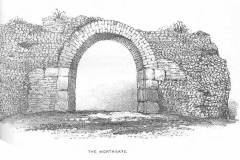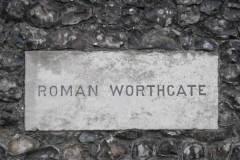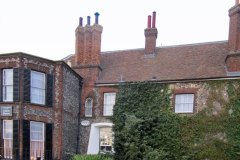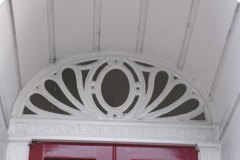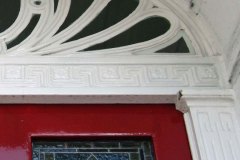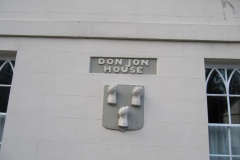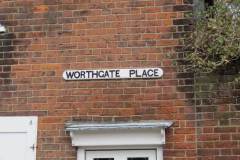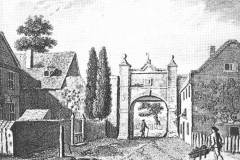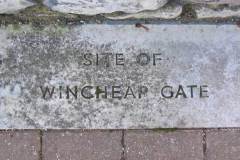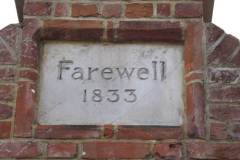Castle Street (Worthgate) & Castle Row (Wincheap Gate)
Worthgate was one of eight gates which stood in the city walls over different periods of its history. Six of these, Westgate, Worthgate, Ridingate, Newingate (St George’s), Burgate and Northgate gave their names to city wards which ran their own courts. Worthgate was of Roman origins and stood close to Canterbury castle near what is now the end of Castle Street. It was about 4 metres wide, and we know its general appearance from a drawing by C F Kell which appeared in Brent’s Canterbury in the Olden Time (Image 1). It was blocked up in 1548 to protect the castle grounds, and travellers were diverted to the new Wincheap gate nearby (now Castle Row). The wall was not re-opened, and the route restored, until the 1790s.
What to see:
- The Cozens stone in the nearby wall commemorating the gate (Image 2)
- The old County Sessions House built in 1730 became a private dwelling, now Castle House (Image 3) when the new Sessions House opened in Longport in 1808. The building bears a date stone and incorporates parts of the gate, city wall, bastion and moat.
- Castle House has an attractive petal motif fanlight (Image 4). Do not miss the frieze immediately above the door (Image 5) which shows a motif known as Greek key (the key shape pattern) and paterae (the repeated circular inserts).
- Opposite Castle House stands Don Jon House (12 Worthgate Place), the front rooms dating from 1774 when it was trading as the Bell Inn. Do not miss the Gothic pointed windows (first floor and fanlight over the door), or the striking three clawed fists on the front of the house (Image 6). Do let us know if you can shed light on the origins of the three fists (or are they claws)?
- Although long gone, the Worthgate name lives on in the name of the house row nearby (Image 7)
- The nearby Wincheap gate (in Castle Row), erected around 1548, was rebuilt in 1770 (Image 8). It is remembered in the Cozens stone (Image 9) and in the ‘Farewell 1883’ stone (Image 10) as the original gate apparently welcomed visitors with a ‘Welcome’ stone and bade them goodbye with a ‘Farewell’ stone on the other side.
Access: the gates no longer exist; Castle House is a hotel; and Don Jon House is a private dwelling.
Sources: Brent (1879); Buckingham (1980); Elder (nd); English Heritage web site Images of England
DL

